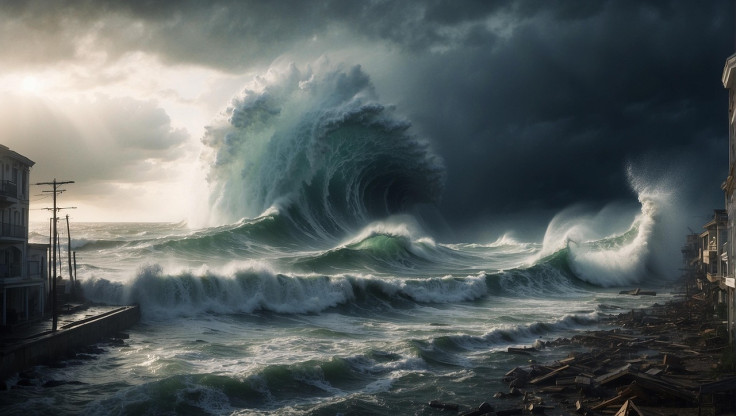Will the 7.4 Russia Earthquake Trigger a Tsunami in Hawaii? Key Facts To Know If Threat Remains Real
Initial warnings for Hawaii have been cancelled after experts confirmed no destructive waves were generated

A powerful 7.4-magnitude undersea earthquake struck off Russia's Kamchatka Peninsula on 20 July 2025, prompting brief tsunami alerts across the Pacific, including a tsunami watch for Hawaii. Authorities later confirmed there was no destructive tsunami threat, and the watch for Hawaii was lifted within 40 minutes.
Key Details
The earthquake, which occurred east of Petropavlovsk-Kamchatsky, initially triggered tsunami warnings along parts of Russia's Pacific coast and prompted Hawaii's Pacific Tsunami Warning Center (PTWC) to issue a tsunami watch.
Forecasts suggested that any waves generated by the quake would be relatively small, with predicted heights of up to 60 cm along Russia's northern coasts and less than 30 cm for Hawaii. Following careful monitoring and data analysis, both the Russian and Hawaiian alerts were cancelled, as there was no evidence of a significant tsunami threat.
What Happened off Kamchatka?
According to the United States Geological Survey (USGS), the main earthquake occurred around 140 km east of Petropavlovsk-Kamchatsky. A series of strong foreshocks and aftershocks followed, including events with magnitudes above 6.0.
Russia's Ministry of Emergency Situations issued an immediate tsunami warning, instructing residents to stay away from the shore. They estimated potential waves of up to 60 cm in the northern Aleutian region, and between 15–40 cm along the Kamchatka coast. The warning was withdrawn after no significant waves were recorded.
Hawaii's Tsunami Watch Explained
Given the quake's strength and offshore location, the Pacific Tsunami Warning Center (PTWC) issued a tsunami watch for Hawaii at approximately 21:03 HST on 19 July (local time). A watch means that a tsunami is possible but not yet confirmed.
The watch was cancelled at 21:42 HST, less than an hour later, when further sea-level and seismic data showed no signs of a destructive wave reaching the islands. Officials reassured residents that there was no need for evacuation, though they urged the public to remain aware of the advisory.
What Is a Tsunami Watch?
In the Pacific alert system, a watch indicates a potential risk based on preliminary earthquake data. It does not require immediate evacuation but serves as a prompt for coastal communities to stay alert. A warning, on the other hand, signals imminent dangerous waves, and evacuation procedures are typically enforced.
Could Hawaii See Minor Waves?
Even when destructive waves are not expected, slight sea-level changes or unusual currents can occur. Forecasts for this quake suggested waves of less than 30 cm, too small to cause major damage but enough to create hazardous currents near harbours or beaches.
The Kamchatka Risk Zone
The Kamchatka Peninsula lies along a major subduction zone known for powerful earthquakes. Notably, a magnitude 9 quake in 1952 generated destructive tsunami waves that impacted Hawaii. Although the recent quake was far smaller, the region's history makes any large seismic activity a cause for careful monitoring.
Safety Advice for Tsunami Alerts
- Follow official warnings: If a tsunami warning is issued, move to higher ground immediately.
- Pay attention to natural signs: Long or strong earthquakes, sudden sea withdrawal, or unusual sounds can indicate an approaching wave.
- Stay informed: Monitor updates from emergency services and weather authorities.
The 7.4-magnitude earthquake off Kamchatka on 20 July has not triggered a tsunami threat to Hawaii, and all alerts have been lifted. While no damage was reported, the event serves as a timely reminder of the importance of understanding tsunami alerts and being prepared for rare but serious events.
© Copyright IBTimes 2025. All rights reserved.





















